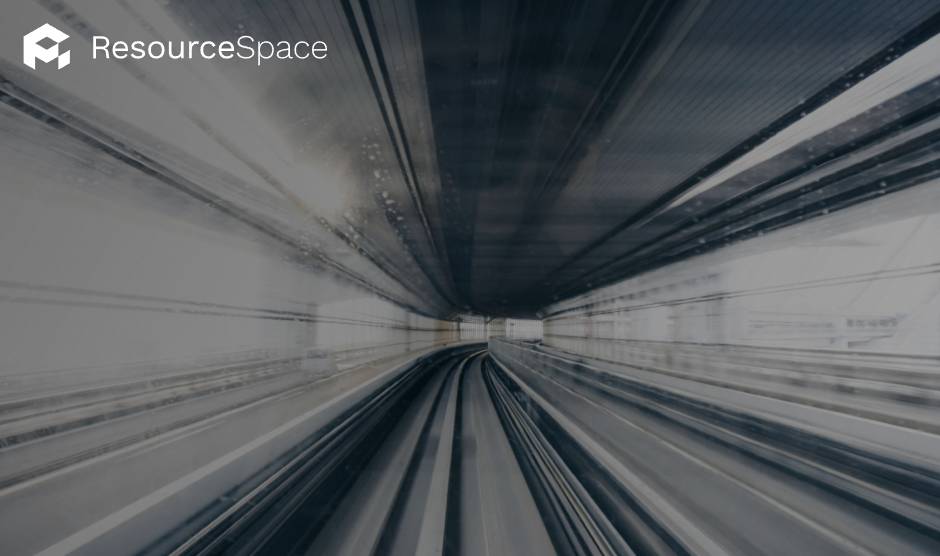
Fairtrade communications staff around the world really appreciate ResourceSpace. It's proven invaluable as a one-stop for sharing and storing all our images and brand assets. I don't know how we'd manage without it!
Blog
4th December 2023

Like with any technology and software sector, the Digital Asset Management industry has seen a lot of changes over the last 12 months.
From the rapid development of AI technology to the increasing importance of DAM at the heart of an organisation’s tech stack, the sector has undoubtedly been going from strength to strength.
So, what will 2024 have in store?
The last 12 months has seen a lot of economic challenges emerge as the cost of living crisis and high rates of inflation impact consumer spending and business investment.
However, the growth of the DAM market has continued unabated, with the sector expected to hit $3.97bn by the end of 2023—up from $3.34bn in 2022.
And this is set to continue.
The market is expected to hit $12.29bn by 2030 (a CAGR of 17.5%), so expect another strong year for DAM in 2024.
This projected growth is evidence of the continuing shift within organisations to be digital-first, with an increasing reliance on digital assets for marketing, sales and business operations—and the subsequent reliance on a system that effectively manages those assets.
Digital Asset Management has always offered a lot of value to marketing teams, acting as a repository for all of an organisation’s creative assets.
However, the use of a DAM by every department in an organisation is on the rise, with MediaValet’s 2024 DAM Trends Report finding that a third of DAM users have implemented it across the entire organisation.
This will present an opportunity to DAM vendors, but it could pose some challenges too, with increasing service requirements and expectations. There will also likely need to be some additional education for departments that aren’t as familiar with DAM platforms, such as sales and customer success teams.
Artificial intelligence has already enhanced DAM functionality. For example, ResourceSpace has leveraged AI for automated metadata tagging for some time. The Open AI functionality has also recently been expanded with the ability to generate text based on an image. The AI can actually ‘understand’ the image and generate a description, keywords, landmarks and more.

Setting a prompt within the ‘Image description’ field with the OpenAI plugin enabled

The resulting description
The Open AI integration also allows the system to process text within an input field and populate an output field with the result.

READ MORE: ResourceSpace and OpenAI integration expands to include GPT-4 image processing
In 2024, we expect the development of AI technology to continue even faster than before.
For DAM in particular, expect to see continuing enhancements to metadata generation and management, AI-powered analytics, AI image generation, personalised content recommendations and more.
The use of APIs in DAM software isn’t anything new, and their role has been steadily growing in recent years, with most DAM vendors now implementing them. In 2024, expect to see a continuing shift towards an API-first and/or ‘headless’ DAM approach.
Although API-first and ‘headless’ architectures are similar, they do have some key differences, specifically in regards to how they interact with, and deliver content to, various channels.
An application is referred to as ‘headless’ when the front-end (the ‘head’) is decoupled from the back-end system, allowing the front-end to be developed independently and offer increased flexibility when it comes to UX and UI. The front-end uses APIs to retrieve content and/or data from the back-end and display that content as required.
Although a headless architecture relies on APIs to retrieve data, an API-first approach puts an emphasis on creating a robust set of APIs during the design and development of an application, the primary objective being to ensure the application’s features and data are accessible to external systems. This offers much more flexibility and makes it easier to integrate the application with other systems.
Similar to how a headless DAM isn’t necessarily API-first, an API-first application isn’t necessarily headless.
With DAM systems becoming more integral to organisations (as discussed above), API-first and headless approaches to DAM development will gain in popularity.
Back in January when we were looking ahead to the trends of 2023, we predicted that DAM market consolidation would continue after we saw an increase in acquisitions in 2022—most notably PhotoShelter acquiring Third Light and FotoWare purchasing Picturepark. ResourceSpace can never be acquired because we're the only 100% employee-owned DAM vendor on the market.
The reasons for this trend were discussed at length in an article by Ralph Windsor over at DAM News, with Ralph arguing that these acquisitions were ‘essentially a competitor deletion exercise’.
As DAM systems become more widely adopted, the number of new business opportunities is shrinking, while most organisations don’t switch DAM vendors lightly. With this in mind, buying up smaller vendors is a direct route to new customers.
In 2023, Canto acquired MerlinOne while Norwegian DAM vendor Papirfly bought French DAM firm Keepeek, and we expect this trend to continue in 2024. It’s also possible we’ll see more acquisitions of complementary service providers, with vendors seeking to enhance their product offering in a bid to grow their market share.
While acquiring new customer-bases might make sense for large DAM vendors, it won’t necessarily make sense for the customer. Organisations choose their DAM platform carefully following a rigorous selection process, so when that DAM is acquired a common customer concern is that the system will no longer be actively developed, or that they’ll have to move over to a new DAM that doesn’t offer the functionality they need.
A common misconception is that it’s hard to migrate from one DAM to another, so some DAM managers might feel stuck if their vendor is acquired, but it’s much more simple than you might think.
Want to find out what next year has in store for ResourceSpace? Check out our published roadmap that details all of the upcoming developments, or book a call below to find out how our DAM system will benefit your organisation both now and into the future.
#AItechnology
#APIfirst
#HeadlessDAM
#Marketing
#Sales
#BusinessOperations
#OrganizationalEfficiency
#DAMTrends
#DigitalTransformation
#IndustryNews